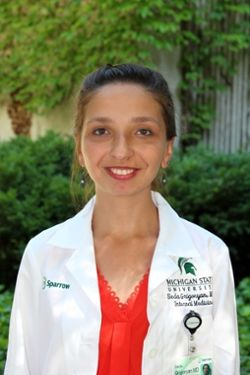Study Calls for Increased Screening of Primary Aldosteronism
An analysis presented at ENDO 2021 suggests less than 5% of patients at high risk for primary aldosteronism undergo screening and most screenings occur after the onset of symptoms.
This article was originally published on PracticalCardiology.com.
Seda Grigoryan, MD

Despite being the most common form of secondary hypertension, new research presented at ENDO 2021 suggests just 3% of high risk patients undergo screening for primary aldosteronism.
An analysis of data from more than 11,000 patients seen in outpatient clinics from 2010-2019, results of the study indicate diagnosis occurs after onset of symptoms on most occasions, which led investigators to call for initiatives to encourage screening of primary aldosteronism in high risk patients.
"The results of our study indicate that initiatives to encourage PA screening are crucial for preventing cardiovascular and kidney disease in many patients with hypertension," said lead researcher Seda Grigoryan, MD, an internal medicine specialist at Michigan State University, in a statement.
With improved screening rates offering an opportunity to improve care of patients and alleviate a significant burden on health systems, the current study was designed by Grigoryan and a team from Michigan State University and the University of Michigan.
The study was designed as a retrospective review of patients aged 18 and older with hypertension seen at university-affiliated outpatient clinics from 2010-2019 who met at least 1 of 4 screening criteria. Screening criteria included being on 3 or more anti-hypertensive medications, having hypertension before 40 years of age, having hypertension and a known adrenal mass, and having hypertension and obstructive sleep apnea. Investigators noted they excluded patients with known high-renin hypertension, renovascular hypertension, or congenital adrenal hyperplasia.
Overall, investigators identified 11,627 patients meeting at least 1 of their inclusion criteria. Upon analysis, results indicated just 3.27% were ever screened for primary aldosteronism. Compared to those who were never screened, patients screened were younger (47.5±17.8 vs 51.3±16.9; P <.0001), more often women (55.28% vs 45.71%; P=.0003), had lower serum K levels (3.4±0.5 vs 3.7±0.4, P <.0001), and were more likely to have chronic kidney disease (29.27% vs 17.5%; P <.0001) and cerebrovascular accidents (9.21% vs 6.16%; P=.02).
When assessing impact of race/ethnicity on screening rates, investigators found 79.9% of those screened were White, 15.3% were Black, and 2.3% were Asian. However, investigators pointed out screening rates were higher among Asian (8.4%) and Black (6.1%) patients than White (2.8%) patients (P <.0001). When assessing the impact of age, investigators found screening rates were similar among those regardless of whether they were young or older than 40 years of age.
Further analysis indicated screening rates were greatest among patients with adrenal nodules (35%) and were lowest among patients with hypertension and obstructive sleep apnea (2.1%).
In subgroup analyses of patients with resistant hypertension, those screened were younger (58.5±14.0 vs 68.7±12.8, P <.0001) and more likely to be Black (20.7% vs 10.1%) than those not screened. In subgroup analyses of patients with adrenal masses, investigators found no sex, age, or race-based differences in those screened versus those not screened.
When assessing initiation of screening, investigators found screening was initiated most often by general internists (53.9%) and endocrinologists (15.8%) while rates were notably lower among nephrologists (9.5%) and cardiologists (4.2%).
This study, “Rates of Primary Aldosteronism Screening Among High-Risk Populations,” was presented virtually as part of ENDO 2021.